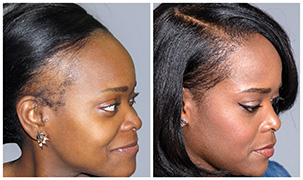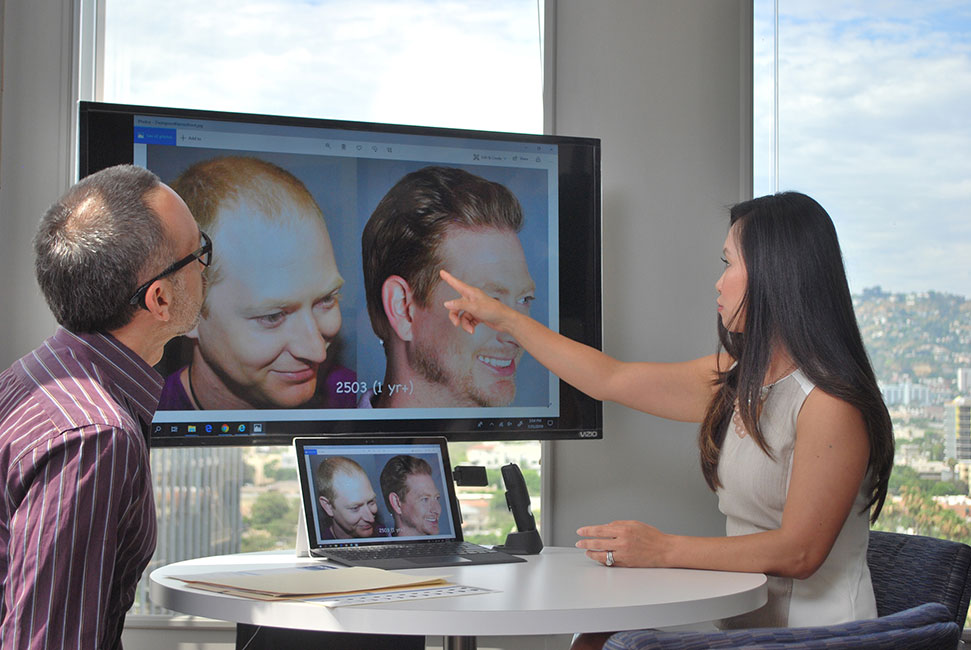The Impact of Female Hair Loss
A full head of hair is often associated with beauty. It’s often tied to a woman’s self-image, so there’s a psychological toll that can come from hair loss. To make matters worse, female hair loss is rarely discussed, making it harder for women to talk openly about their condition or find solutions that can help them address it. Know that you are not alone if you are experiencing female hair loss: women account for nearly 40% of people with visible hair loss by the age of 40.
While some amount of hair shedding comes with age, significant hair loss may be the product of hairstyling that pulls your hair back tight (traction alopecia) or a genetic condition.
If you want to know what is causing your hair loss and what treatment options are best for you, consider speaking with a trained Bosley specialist to learn about all of our proven hair restoration solutions.
The Most Common Cause of Hair Loss in Women
Female Pattern Hair Loss may sound similar to Male Pattern Baldness (the two even share the same medical name — androgenetic alopecia), but the two are not interchangeable.
Unlike men, women typically experience hair loss that radiates from the top of the head. This diffused thinning often spreads slowly across the scalp—so you may not notice it immediately.
Prompt treatment can slow and even reverse the impact of this hereditary condition. Bosley offers a host of treatment options, and one of our trained specialists can help you determine the solution that best suits you.
Other Causes of Hair Loss
- Traction alopecia – It is most commonly found in people with ponytails, tight braids or any hairstyles that typically pull on hair with excessive force. In addition, rigorous brushing, heat styling and rough scalp massage can damage the cuticle, the hard outer casing of the hair. This causes individual strands to become weak and break off, reducing overall hair volume.
- Trichotillomania –This is the loss of hair caused by compulsive pulling and bending of the hairs. Due to the constant extraction of the hair roots, permanent hair loss can occur. Onset of this disorder tends to begin around the onset of puberty and usually continues through adulthood.
- Traumas such as major surgery, poisoning, and severe stress may cause a hair loss condition known as telogen effluvium, in which a large number of hairs enter the resting phase at the same time, causing shedding and subsequent thinning. The condition also presents as a side effect of chemotherapy – while targeting dividing cancer cells, this treatment also affects hair’s growth phase with the result that almost 90% of hairs fall out soon after chemotherapy starts.
- Temporary or permanent hair loss can also be caused by several medications, including those for blood pressure problems, diabetes, heart disease and cholesterol. Any that affect the body’s hormone balance can have a pronounced effect: these include the hormone replacement therapy, steroids and some acne medications.
- Alopecia areata – This is autoimmune disorder also known as “spot baldness” that can result in hair loss ranging from just one location (Alopecia areata monolocularis) to every hair on the entire body (Alopecia areata universalis). Although thought to be caused by hair follicles becoming dormant, what triggers alopecia areata is not exactly known. In most cases the condition corrects itself, but it can also spread to the entire scalp (alopecia totalis) or to the entire body (alopecia universalis).
- Cicatricial alopecia – This is a diverse group of rare disorders that destroy the hair follicle, replace it with scar tissue, and cause permanent hair loss. The hair loss may be accompanied with severe itching, pain and burning, and progress rapidly. In other cases the hair loss is gradual, without symptoms, and is unnoticed for long periods. It is also sometimes known as scarring alopecia and can occur in otherwise healthy men and women of all ages.
- Hypothyroidism (an under-active thyroid) and the side effects of its related medications has been found to cause hair loss, typically frontal, which is particularly associated with thinning of the outer third of the eyebrows (also seen with syphilis). Hyperthyroidism (an over-active thyroid) can also cause hair loss, though parietal rather than frontal.
Hair Loss Solutions for Women
- Hair Transplant – At this time, hair transplantation is the only permanent solution to female genetic hair loss. Whether you’ve already lost a great deal of your hair due to female pattern hair loss or you’ve just started to notice some thinning at the scalp, a hair transplant is a natural-looking, highly effective way to combat genetic hair loss.
- BosleyRx – There are a number of effective medications that can also be used to address female pattern hair loss and your hair loss provider can help you decide which may be best suited for your particular case. Prescription hair loss medications can aid in decreasing hair loss and promoting hair growth. One example, BosleyRx’s Hair Growth Treatment for Women features minoxidil and spironolactone and is specially formulated to combat female androgenetic alopecia with a convenient once-daily pill.
- SMP – A non-surgical hair loss solution that restores the appearance of thicker, fuller hair at the scalp. Scalp Micropigmentation (SMP) involves applying pigment with micro-fine needles to create thousands of tiny impressions, giving the illusion of hair. It’s a cosmetic procedure that offers instant results – your hair will look fuller that very same day!
- Low-Level Laser Therapy – Fighting hair loss can be as easy as throwing on a hat. The Bosley Revitalizer cap is perfect for women experiencing mild to moderate hair loss. Using clinically proven, FDA-cleared low-level laser therapy, also known as photobiomodulation, stimulates cellular activity and blood circulation to promote hair growth while reducing hair thinning.
- BosleyMD – Products Make your everyday hair care routine part of your battle against thin appearing hair. BosleyMD offers a line of hair care products formulated to help women address hair loss and reduce the appearance of thinning hair. From shampoos to conditioners to thickening treatments to supplements to FDA-approved hair regrowth treatments, there’s something for everyone.
Evaluating Female Hair Loss
The Ludwig Scale
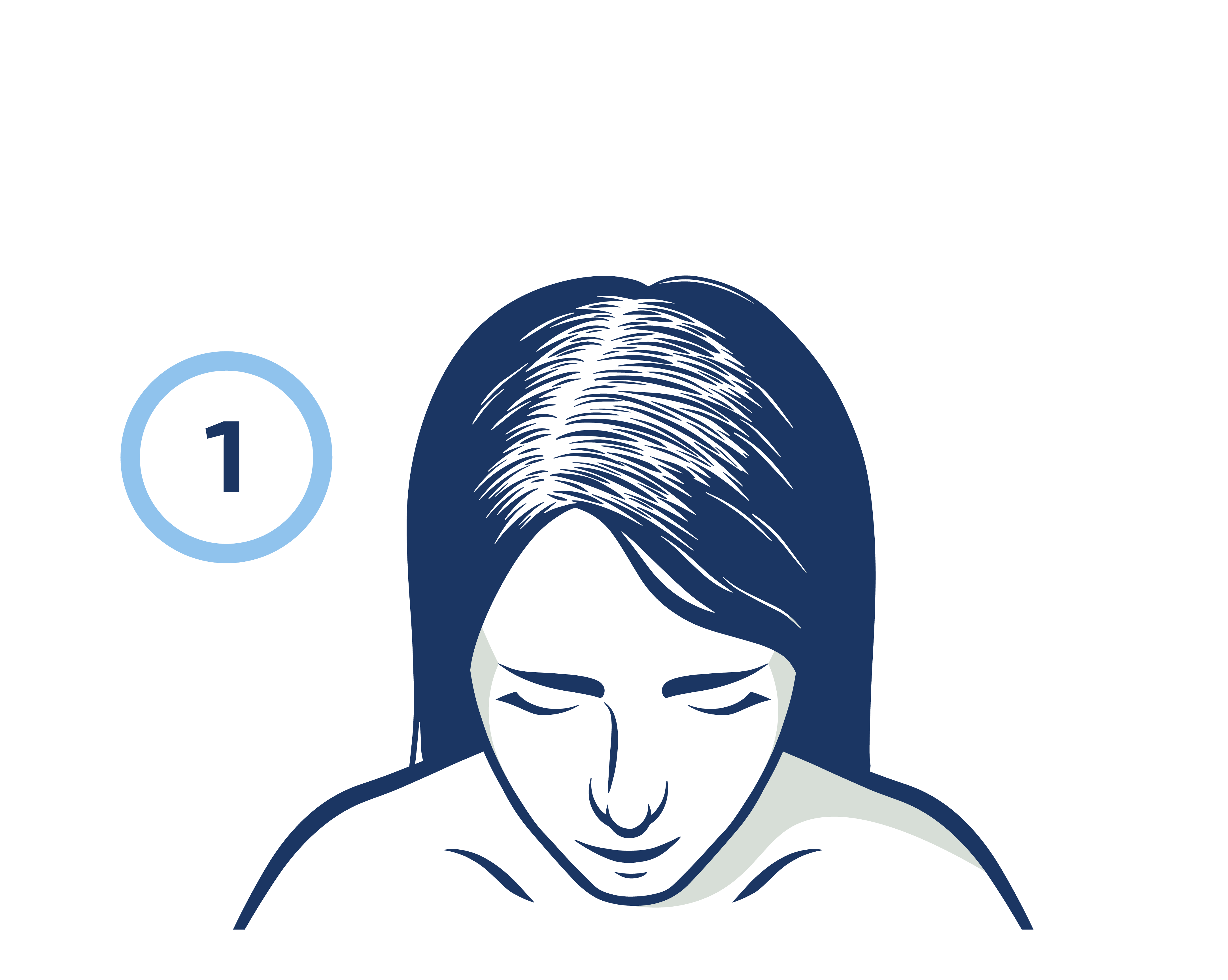
The earliest stage of female hair loss. Hair loss has begun on the front and top of the scalp. Many women don’t notice their hair loss at this point, but parting your hair down the center typically makes the hair loss more visible.

At this point, the hair loss is more significant. The scalp clearly shows through thinning areas. You might notice thinning, shedding, and decreased hair volume.
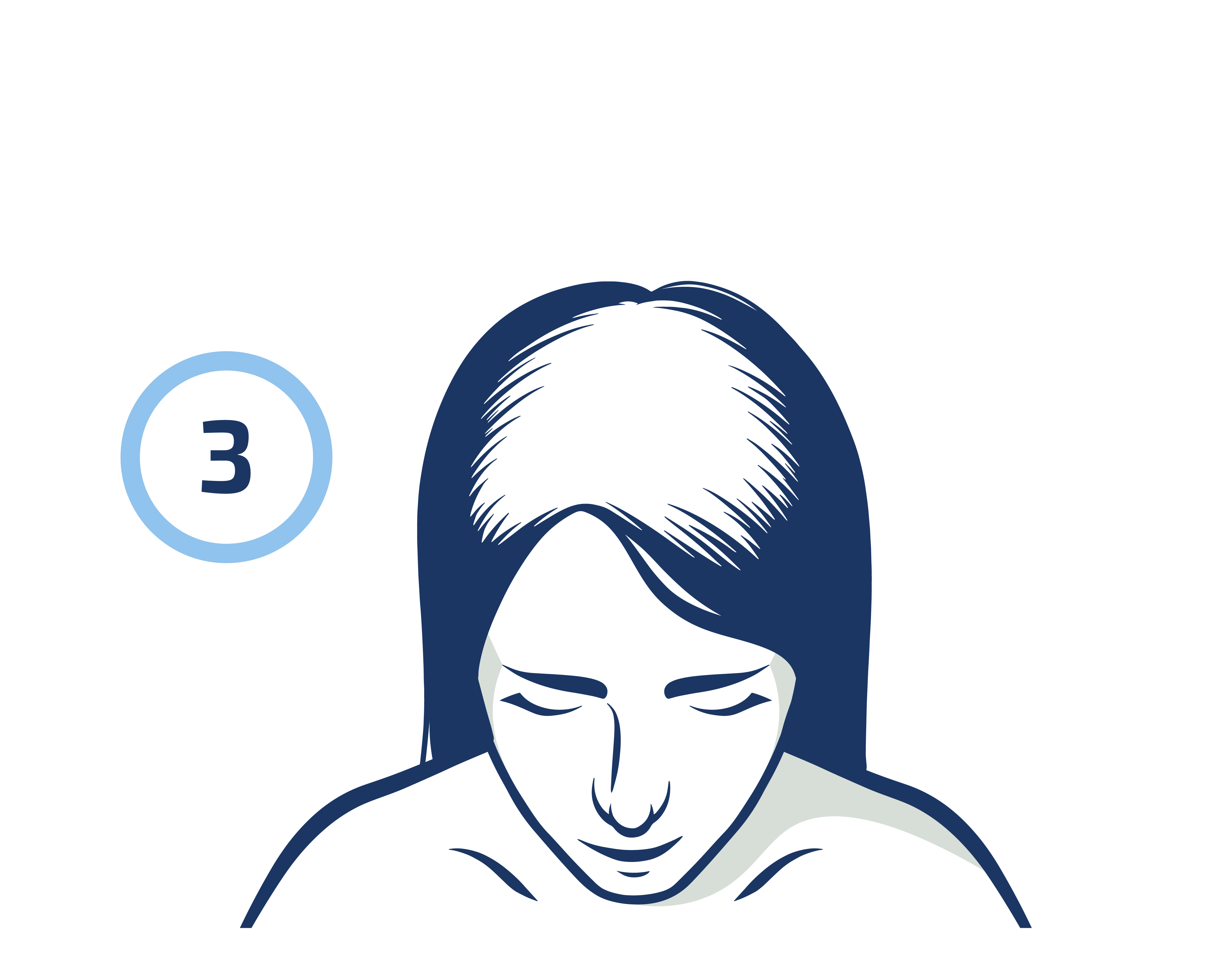
The final stage of hair loss. You may have completely lost the hair on the crown of your head. Typically, physicians cannot harvest enough grafts to fully treat the affected area. However, many women will still see a significant improvement to their appearance following proper treatment.
Before and After Photos
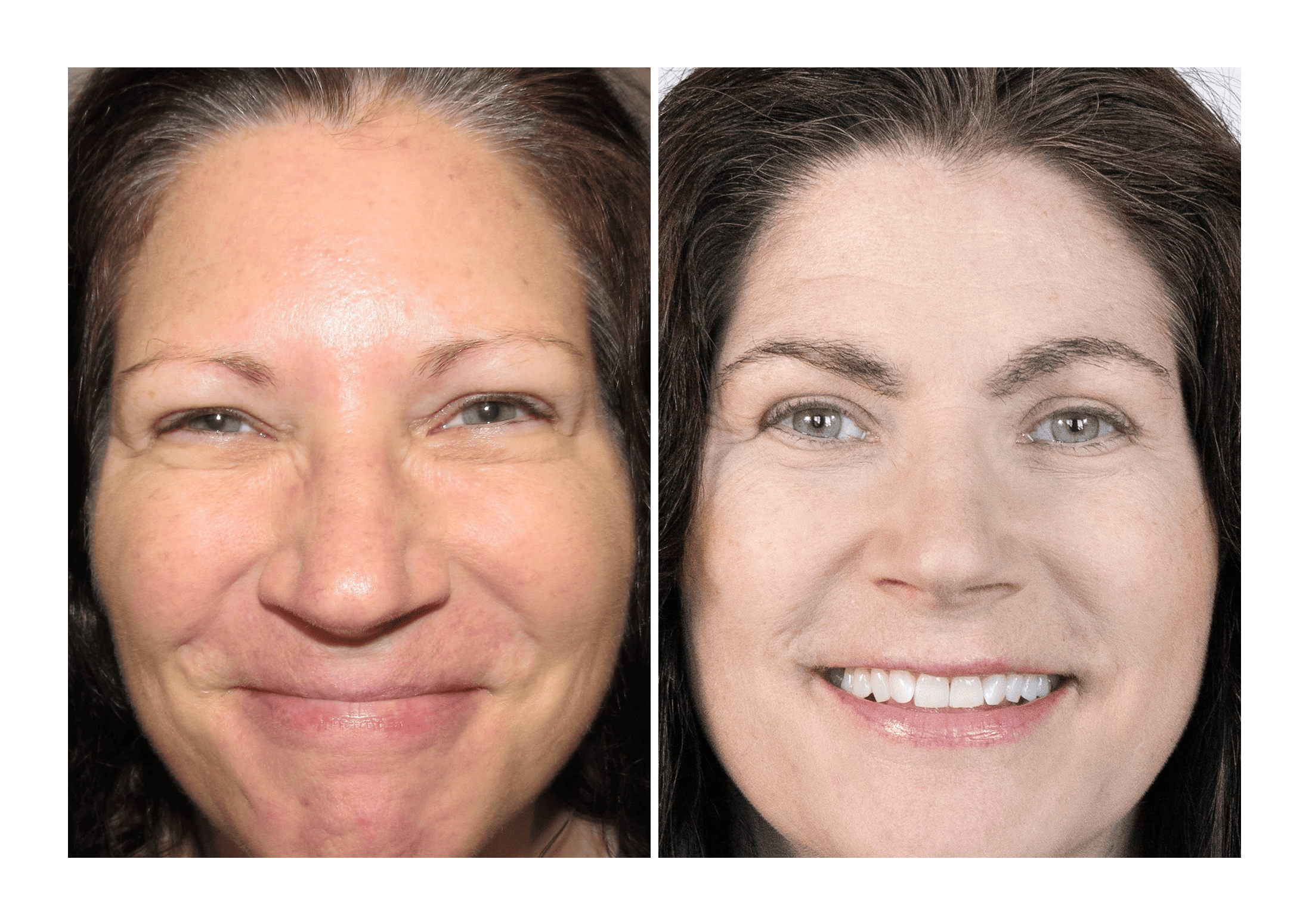
- Procedure
- FUT, Eyebrow Restoration
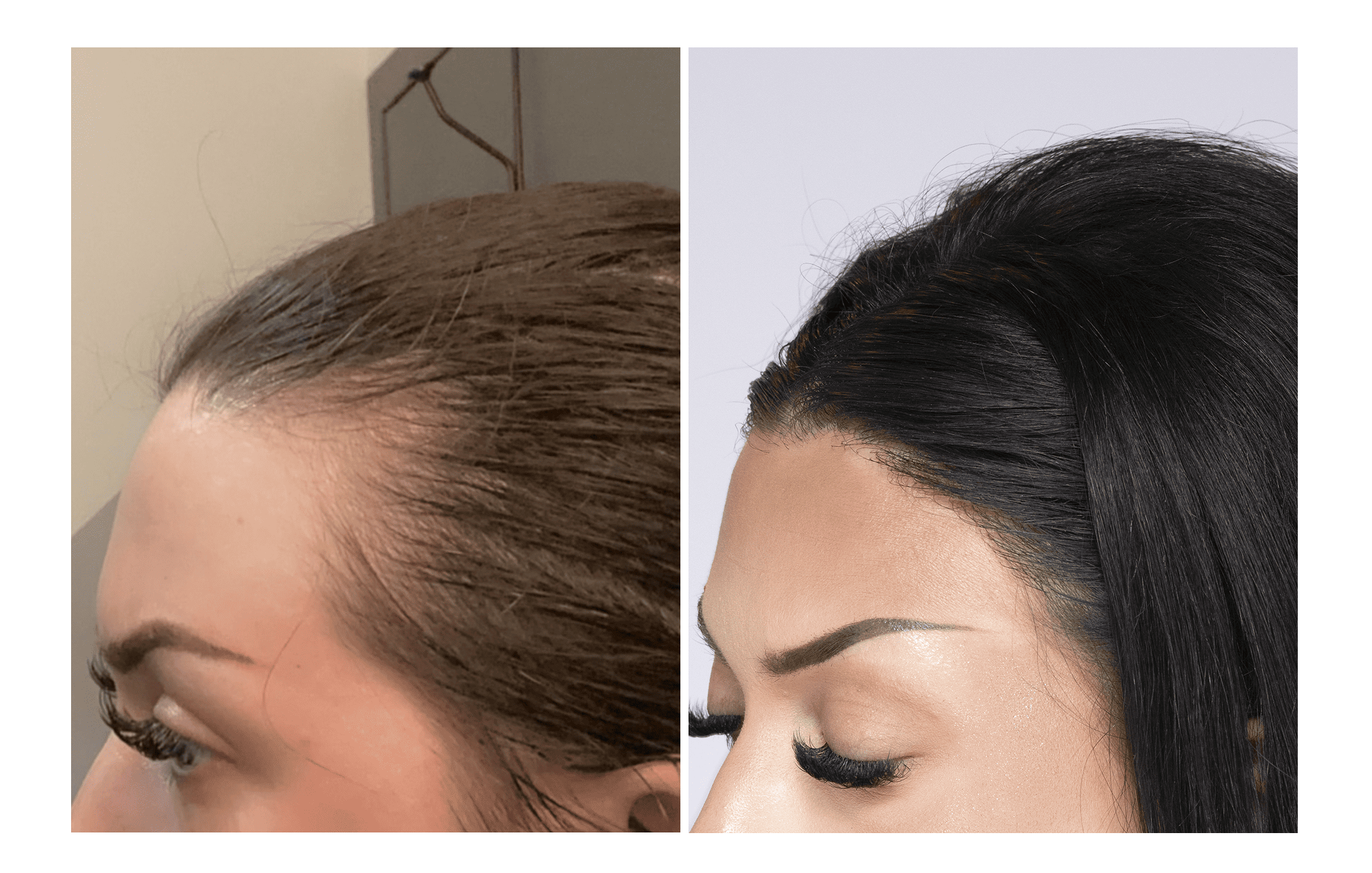
- Procedure
- FUT

